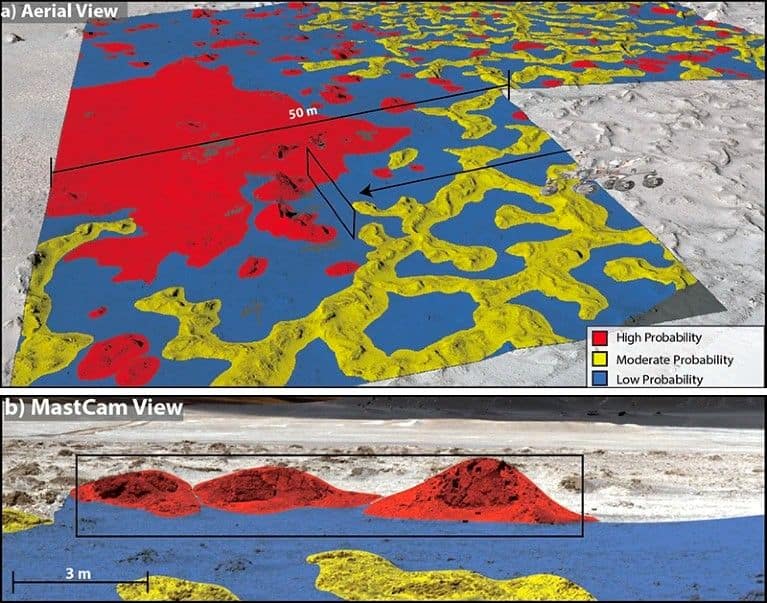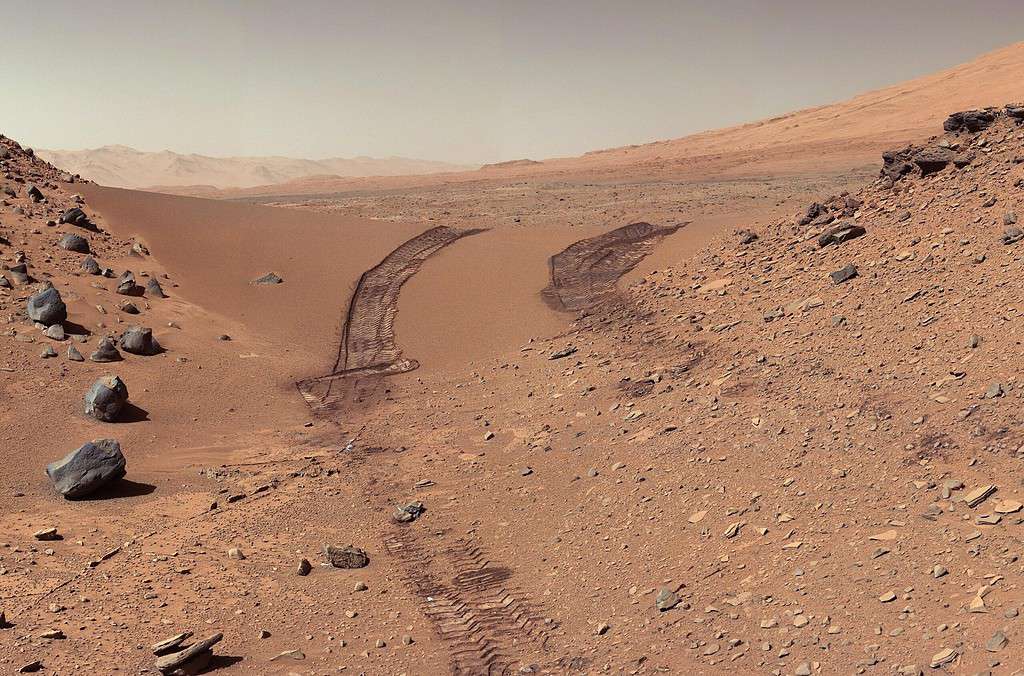
We’ve learned quite a lot about Mars in recent years. We’ve learned that it’s not like Earth nowadays, but it used to be remarkably like our pale blue dot in its past. Researchers now believe vast bodies of liquid water covered the Martian surface, and if liquid water existed — so too could life. We’re not really talking about alien civilizations or even macroscopic animals, but researchers suspect that microbial life on Mars is not that unlikely.
So how could we find the best places to look for it?
AI finds the needle in the haystack
The key to any search for Martian life has to start with a good landing spot. Sure, we’ve got rovers and even a drone on Mars, but they don’t cover all that much ground. Since the 1970s, the Martian rovers have covered, in total, less than 200 miles. So you want to make sure that all the exploring is done in promising areas.
In the new study published in Nature, researchers demonstrated that artificial intelligence (AI) and machine learning methods can highlight the promising areas that may harbor life.
The algorithm starts off with drone-recorded images and then couples those images with existing ground sampling data and 3D topographic maps. From this, it categorizes regions into four microhabitats (on the scale of meter to kilometer) and six microhabitats (on the centimeter scale). The AI results were then compared with ground-truthed data.
For now, the model has been trialed on Earth, on a 3 km² area in the Salar de Pajonales basin, at the boundary of the Chilean Atacama Desert and Altiplano in South America. The Pajonales area is often used in Martian research because it resembles some environments on the Red Planet. The entire area is essentially a 4-million-year-old former lakebed, and experiences strong ultraviolet exposure, high-salt environments, and low temperatures.
In the Pajonales area, the AI accurately detected biosignatures.
“For both the aerial images and ground-based centimetre-scale data, the model demonstrated high predictive capability for the presence of geological materials strongly likely to contain biosignatures,” said Dr Kalaitzis. “The results aligned well with ground-truth data, with the distribution of biosignatures being strongly associated with hydrological features.”

Overall, the algorithm proved capable of locating and detecting biosignatures up to 87.5% of the time (versus ≤10% by randomly searching). This decreased the search area required to find a positive result by up to 97%.
The researchers now want to test the model’s ability to characterize other types of geological areas, specifically on Mars, but also on other bodies in the solar system that could host life.
“This work demonstrates an AI-guided protocol for searching for life on a Mars-like terrestrial analogue on Earth. This protocol is the first of its kind trained on actual field data, and its application can in principle generalise to other extreme life-harbouring environments. Our next steps will be to test this method further on Earth with the aim that it will eventually aid our exploration for biosignatures elsewhere in the solar system, such as Mars, Titan and Europa.”
Researchers haven’t found any evidence of life existing on Mars, but they’ve found lots of evidence that Mars could have supported life in the past. It remains one of the most exciting extraterrestrial places in regards to alien life. Recently, however, researchers are looking more and more at frozen moons like Titan and Europa, where life could survive in a body of liquid water under the frozen surface. The Europa Clipper mission, which will analyze some of these moons in more detail than ever before, is scheduled for Oct 10, 2024, attempting to assess whether these frozen places could indeed support life as we know it.
The paper ‘Orbit-to-Ground Framework to Decode and Predict Biosignature Patterns in Terrestrial Analogues’ has been published in Nature Astronomy.






